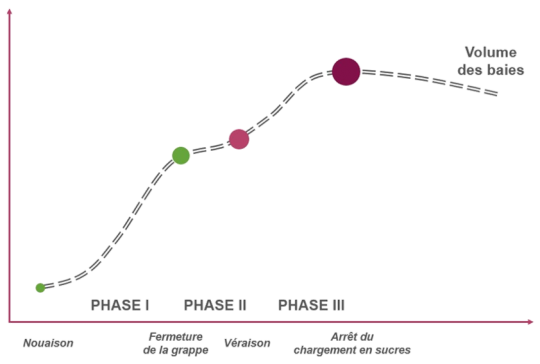Determining Potential Alcohol By Volume (PABV)
Measuring the sugar content of the grapes is essential because it directly determines the alcohol content of the future wine, and the latter is regulated by the specifications for each appellation. As ripening progresses, the berries become more concentrated in sugar. In the event of heavy rain, it is sometimes possible to observe a temporary decrease in sugar concentration due to dilution. The most commonly used tools to measure sugar levels are refractometers and densimeters. The results can be expressed in various measurement units depending on the instruments used. The most common units are density in g/l (usually called density even though it is not), Baumé degree and Brix degree (Balling). Once the result has been obtained, it has to be converted to the corresponding potential alcohol content (the official value approved by the EU is that 16.83g/L of sugar is required to form 1% by vol. of alcohol). Measurements can be taken during the véraison period and then as regularly as possible as maturity and the desired alcohol content approaches. Very high sugar concentration can have a negative impact on the alcoholic fermentation process. At maturity, sugar content varies between 160 and 250 g/l.

